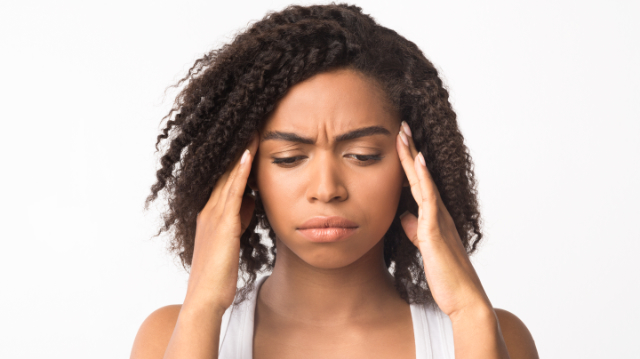Health Blog: Solutions & Wellness Tips
Physical Therapists Use Specialized Techniques To Treat Vertigo

As we discussed in our first post, vertigo is the feeling that things are moving, rotating, rocking, or spinning when a person and their environment are completely still. It occurs when there is a problem with the vestibular system that interferes with communication between the brain and other areas of the body. This communication breakdown leads to the primary symptom of perceived motion, as well as other symptoms, which might include dizziness, nausea/vomiting, balance issues, and headache.
It’s difficult to establish firm figures on the prevalence of vestibular disorders, but it’s believed that millions of Americans experience vertigo and other related symptoms each year. One study reported that as many as 35% of adults over the age of 40—about 69 million—have dealt with a vestibular dysfunction at some point in their lives. There are several conditions that can cause vertigo, such as inner ear infections, migraines, stroke, surgery, and head injuries, but the two most common issues are vestibular neuritis and benign paroxysmal vertigo disorder (BPPV).
Vestibular neuritis results from inflammation within the inner ear, which consists of a system of fluid–filled sacs and tubes called the labyrinth. The main symptoms of vestibular neuritis are sudden and severe vertigo, as well as dizziness, balance difficulties, nausea and/or vomiting, and difficulties with concentration.
BPPV is the most common vestibular disorder and the leading cause of vertigo. It can affect people of any age, but is most common in adults over 60 years, at which point its prevalence is about 9%. BPPV occurs when tiny calcium crystals in the inner ear break off and move to another part of the inner ear, where they cause an unwanted flow of fluid. This tricks the brain into thinking that motion is occurring when things are at rest. In addition, when the head is moved in certain directions, it causes the crystals to stimulate nerve endings in the canal, which leads to dizziness. Other symptoms of BPPV include nausea, vomiting, lightheadedness, and a resulting loss of balance or unsteadiness.
The good news for patients is that BPPV and other causes of vertigo are very treatable. Physical therapy is regarded as one of the most effective vertigo treatments and it has been proven to significantly reduce symptoms. And best of all, many cases of vertigo can be completely resolved in just a few treatment sessions. The specific treatments used depends on what condition is present, but some of the most common interventions are listed below:
- Balance retraining exercises: these types of exercises will have the patient shift their body weight in various directions while standing to improve the way information is sent to the brain
- Gaze stabilization exercises: these are designed to keep vision steady while making rapid side–to–side head turns and focusing on an object, which will help the brain adapt to new signaling from the balance system
- Epley maneuver: an extremely effective technique for cases of BPPV involving the posterior canal of the ear that works by allowing the free–floating crystals to be relocated by gravity back to the utricle; has been found to resolve vertigo in approximately 90–95% of patients
- In another simple maneuver, your physical therapist will guide you through a series of 2–4 positions, each of which should be held for up to two minutes; as with the Epley maneuver, these position changes are designed to move the crystals from the semicircular canals back to the appropriate area of the inner ear
- Balance retraining exercises may be needed for some patients that continue to experience balance issues after the vertigo has subsided
Research supports physical therapy for vertigo
Several studies have shown that physical therapy is indeed effective for patients with vertigo. In one systematic review published in 2020, researchers reviewed 20 randomized and 2 non–randomized controlled trials that evaluated the effectiveness of physical therapy interventions for 1,876 older adults with vertigo, dizziness, or balance disorders. Moderate quality evidence showed that these interventions were superior to usual care for improving balance, mobility, and other related symptoms.
We hope this series of posts helped you better understand why physical therapy is such a valuable option for whatever physical problems you may be dealing with. If you’re interested in learning more about how we can help you or would like to schedule an appointment, contact us today.
October 25, 2022
Back to Health BlogRECENT POSTS
- Stretching Could Be A Game-Changer for Chronic Pain Relief
- Easing the Burden of Tension Headaches With Physical Therapy
- Got Heel Pain? New Study Reveals How to Outsmart Plantar Fasciitis
- How Physical Therapy Can Tame Whiplash-Related Symptoms
- Exercise Therapy May Provide Relief for Chemotherapy-Related Issues
- Unlocking Relief From Elbow Pain With Hands-On Therapy and Exercise
- Are Deep Squats Really as Bad as We Think?
- Reclaiming Your Grip: The Power of Hands-On Therapy for Tennis Elbow
- Runners Can Overcome a Common Knee Condition With Physical Therapy
- How Physical Therapy Can Help Older Adults Stay on Their Feet
